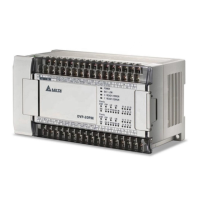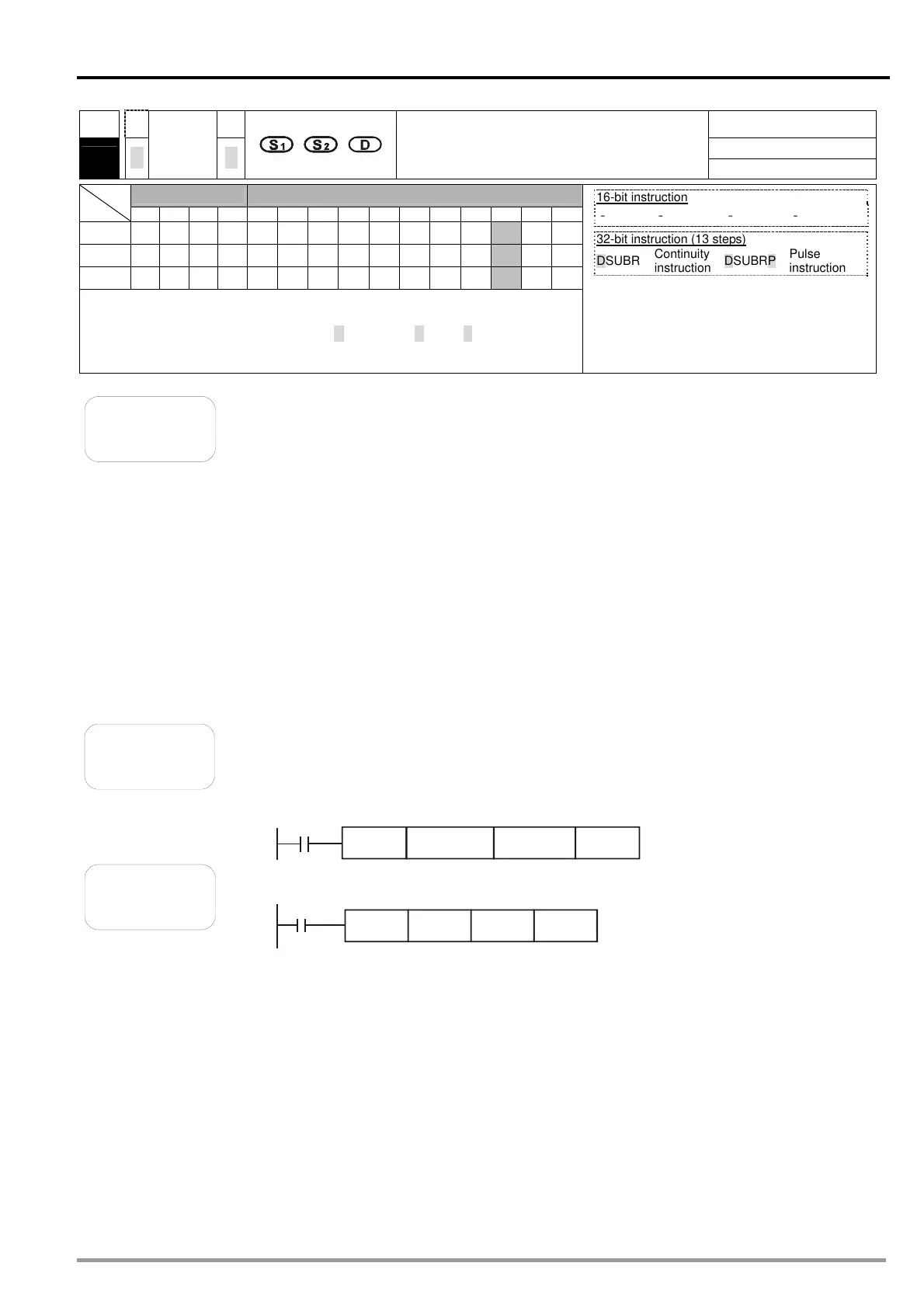5 Applied Instructions and Basic Usage
DVP-20PM Application Manual
5-123
API
Applicable model
20PM
173
D
D
SUBR
P
P
Floating-point subtraction
Bit device Word device
X Y M S F H KnX KnY KnM KnS T C D V Z
S1
*
S2
*
D
*
Note: Please refer to specifications for more information about device
ranges.
Only the 32-bit instructions DSUBR and DSUBRP are valid.
16-bit instruction
- - - -
32-bit instruction (13 steps)
DSUBR
Continuity
instruction
DSUBRP
Pulse
instruction
Flags
Ox O100
M1808 M1968 Zero flag
M1809 M1969 Borrow flag
M1810 M1970 Carry flag
Please refer to the additional remark below.
Explanation
S
1
and S
2
can be floating-point values
S
1
: Minuend; S
2
: Subtrahend; D: Subtrahend
S
1
and S
2
can be floating-point values (e.g. F1.2), or data registers in which
floating-point values are stored.
If S
1
and S
2
are data registers in which floating-point values are stored, the
function of API 172 DSUBR is the same as the function of API 121 DESUB.
The floating-point value in S
2
is subtracted from the floating-point value in S
1
,
and the difference is stored in D.
S
1
and S
2
can be the same register. If the instruction DSUBR is used under the
circumstances, the value in the register is subtracted from itself whenever the
conditional contact is ON in a scan cycle. Generally, the pulse instruction
DSUBRP is used.
If the absolute value of an oepration result is greater than the maximum
floating-point value available, a carry flag will be ON. If the absolute value of an
oepration reuslt is less than the minimum floating-point value available, a
borrow flag will be ON. If an operation result is 0, a zero flag will be ON.
Example 1
When X0 is ON, the floating-point value F2.200E+0 is subtracted from the
floating-point value F1.200E+0, and the difference F-1.000E+0 is stored in
(D11, D10). (The floating-point value F1.2 is represented by the scientific
notation F1.200E+0 in a ladder diagram. The number of decimal places which
are displayed can be set by means of the View menu in WPLSoft.)
X0
DSUBR F1.200E+0
D10
F2.200E+0
Example 2
When X0 is ON, the floating-point value in (D3, D2) is subtracted from the
floating-point value in (D1, D0), and the difference is stored in (D11, D10).
X0
DSUBR
D0
D2
D10

